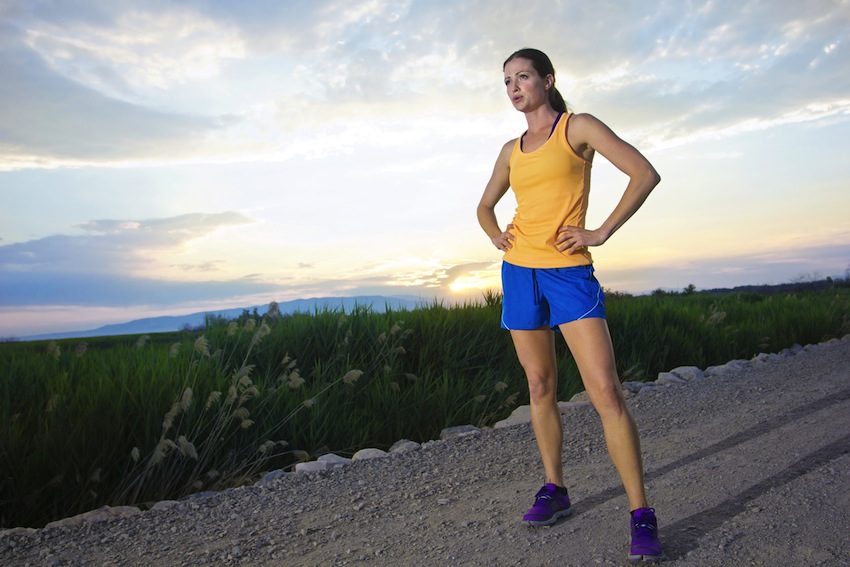Ask the Expert: How to Treat and Prevent Side Cramps

Stopping to catch your breath can be the best cure for a side cramp. Runner image via Shutterstock.
If you’re an athlete, you’ve likely experienced the sometimes excruciating and always annoying pain of a side cramp mid-workout. The cramp usually crops up suddenly and without warning, and while it might disappear after a few minutes, it may also last for the entirety of your run.
What are side cramps? Why do we actually get them, and how can we prevent them? We asked Dr. Robert Nascimento, an orthopedic surgeon and sports medicine specialist at St. Elizabeth’s Medical Center who also works as a team physician at Boston College’s sports programs and for the Boston Breakers.
What is a side cramp, and why do I get side cramps when I run?
Upwards of 60 percent of all runners will have an episode of side cramps each year. Side cramps are also known to the medical world as “exercise-induced transient abdominal pain,” and they often occur because of decreased blood flow to the diaphragm. This is usually because of the increased abdominal pressures that occur while running and breathing hard. You can also get side cramps because of an irritation of the supporting ligaments to the abdominal organs. The irritation causes cramping in the lining of the torso. Basically, running increases abdominal muscle contractions and pressure, and shallow breathing, which usually occurs while running, limits diaphragm contraction, leading to a side cramp.
The good news is that you can prevent side cramps through pre-exercise stretching, adequate hydration before exercise, and slowly easing into a more intense workout. Some research has shown that side cramps occur after large, particularly fatty meals, so timing workouts well after you eat could also help to prevent them. You should try to avoid shallow breaths and concentrate on taking slow, deep breaths while training. Seasoned runners usually don’t experience side cramps because of their increased endurance, so the symptoms are seen more often in younger individuals and novice runners.
If you get a side cramp, the best way to treat it on the spot is to decrease your speed or to stop exercising entirely and rest for a few minutes. Deep breathing and bending forward, as well as simple stretching, should alleviate the symptoms. Some reports say that upward pressure directed at the side that is cramping can help symptoms, too.
Speaking of, side cramps are a bit more common on the right side of the torso, but you can also get them on the left side. Left-sided cramping symptoms can mimic the referred pain of more serious heart issues, though, so if your pain doesn’t resolve after rest and stretching, or if it comes back again, you should see a doctor right away.


